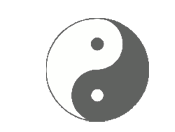The Essentials of Arts & Human Development
The role of the arts in human development illuminates the creative essence of humanity. For human acts of creation stitch together the differently coloured threads of heart, mind and soul in each and every person. The bigger picture, in regard to what the human family holds in common, is evident in the similarities across cultures in creative human self-expression since the earliest image-making in rock paintings produced on every continent by our human ancestors.
Those images represent the unity of the human species, in regard to the perennial wisdom that our life fundamentally is interwoven with the Divine above and Nature here on earth. In other words, something in the core of our consciousness, shown from the earliest moment of imagining and recording our stories in visual symbols, demonstrated an innate recognition that human life is sustained by interrelationships with other life forms at multiple levels of energy.
This foundational capacity of the human being - the creative imagination - is what has sustained the human spirit to survive through the most harrowing circumstances as well as soar to astounding heights of creative accomplishment that quicken the souls of fellow human beings. Speaking to the former instance, I recall the account of Holocaust survivor Viktor E. Frankl, who experientially lived his formulation of logotherapy in Nazi death camps, by envisioning himself on a podium reciting passages from a future book, rehearsed repeatedly in his mind to keep his sanity. In regard to sustaining the human spirit, also consider what motivated the building of the Sistine Chapel in Rome, the Giant Buddhas of Afghanistan (mindlessly destroyed by terrorists), Stonehenge and the pyramids.
But, sadly, the appreciation of the role of the arts, through centuries of Western cultural life, increasingly has been commodified. This short-sightedness, in turn, has relegated the arts as peripheral to what is important to teach in our schools. The overlooked fact is that the arts are central to the fuller development of every child. A range of ways of knowing through artistic activity can be awakened and developed. The development of the imagination, for example, is key to critical thinking and problem solving, both important life skills. It also is pertinent to all walks of life, whether the sciences, the business world, physical labour and more.
A related misunderstanding about the importance of the arts, in many North American schools, is the misguided assumption that only specific children, who appear gifted creatively, ought to be given the opportunity to study in those particular fields, where they demonstrate `talent' - music, dance, painting, drama and so on. But such misunderstanding indicates much more the consumerist mindset of our social indoctrination, rather than valuing the innate holistic development latent within all children, awakened through the arts to express feelings and soul.
Enough studies have been done, and the evidence produced, by maverick thinkers and practitioners, such as Howard Gardner in books such as Multiple Intelligences. If only more holistic awareness could exist in ministries of education to support appropriate curricula in visual and performing arts.
The arts, furthermore, do not necessarily need to be stand alone curricula. Secondary school curricula ought to be more interdisciplinary. Examining a range of media (in media literacy activities), including art representations of Nature, could be juxtaposed to an ecological literacy approach in science curricula, for example. Art and ecological literacy are a natural fit, whether exploring what renown artists are telling us about Nature or encouraging students to create artistic works that communicate their own new insights.
Other challenges at this historic moment are paradoxical. Yes, the arts have become commodified. But, highly talented individuals who choose to practice their skills as creative professionals need to earn a living. Yet they find their expertise reduced to the moniker of `content providers.' This reductionist term popular in the digital world reveals how creative professionals, experienced in many fields of knowledge, are valued far less in their areas of creative intelligence than those who demonstrate expertise in inventing and applying digital tools. In short, technology skills are more valued than other fields of knowledge, the content for which digital technologies now make widely available.
A grave inequity is the result, that must be corrected in the digital world. Copyright infringement is running rampant as a consequence of the digital world's capacity to make freely available the knowledge of contemporary creative professionals. But the latter - whether emerging or veteran creators - need and deserve user revenues to research and develop, communicate and, thereby, contribute to the advancement of knowledge through cultural production of art forms, in creative representations to raise awareness to help us to understand, and intelligently address, the human and planetary conditions of accelerated change.



